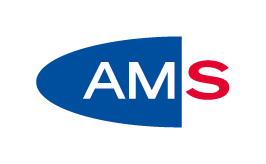Abstracts 2012
Abstract
Mechanisms supporting permeability in education and training – Towards a European typology
Von:Saniter, Andreas; Universität Bremen/Institut Technik und Bildung (ITB), Deutschland
Wittig, Wolfgang; Universität Bremen/Institut Technik und Bildung (ITB), Deutschland
Luomi-Messerer, Karin; 3s research laboratory, Österreich
Session: 2
Zeit: Donnerstag, 05.07.2012, 16:30 - 18:30
Ort: FH Saal D
Typ: Paper
Downloads: Präsentation als PDF
Permeability in education and training is an important topic in education policy at European and national levels. On European level it has been on the agenda at least since the Copenhagen Declaration, has also become an issue of VET attractiveness, and has received a distinctive position within the Bologna process. Over the last years, activities and processes were initiated leading to the development of transparency tools that are supposed to enhance permeability and progression, such as (European, national or sectoral) qualifications frameworks and credit transfer systems (like ECTS and ECVET). Permeability is also addressed in the strategic objectives of the Education & Training 2020 work programme.
On national levels, the European aims have been taken up and are reflected in national policies, such as lifelong learning strategies. A variety of policies and mechanisms supporting permeability – e.g., between different VET pathways or between vocational education and training (VET) and higher education (HE) – have been implemented. E.g., different models and measures can be identified which countries are adopting for the establishment of pathways between VET and HE (Cedefop 2009; Commission of the European Communities 2009; Dunkel & Le Mouillour 2009; Powell & Solga 2010). Countries are implementing new schemes for:
- educational and training provision: development of new institutional settings and organisational forms and co-operations between VET and HE institutions as well as introducing new educational offers, including new programs, so called ‘hybrid degrees‘ or degrees that may bridge gaps between the different segments, or ‘organisational hybrids‘ such as dual study programs at practice-oriented universities offering a mixture of general HE and company-based training; introduction of VET programs with greater emphasis on generic skills as well as new vocational HE programs;
- access: making VET and general upper secondary education equivalent for HE entry and defining new entry routes, including instruments and schemes for facilitating access and admission to HE; establishing quotas for VET graduates’ access into HE;
- providing recognition and credits for prior learning.
Different scenarios have been described for the future development of the relationship between VET and HE (Powell & Solga 2010): academic and vocational tracks keep their main characteristics and separate responsibilities, qualitative differences between these two tracks will be reduced (‘unification’) or a new intermediate sector offering dual qualifications will evolve (‘hybridization‘). The design of meaningful links between VET and HE has become an ‘issue of major relevance for policymaking in many areas: education funding, the organisation of studies, institutionalisation of dialogues and relations between VET and HE and their stakeholders‘ (Dunkel & Le Mouillour 2009).
While some permeability schemes have already been discussed in several studies and specific aspects of permeability and lifelong learning such as the relationship of credit systems and qualifications frameworks (Cedefop 2010) have been investigated, a more comprehensive picture of the various mechanisms that support permeability in education and training in the national contexts remains a desideratum.
This paper presents outcomes of a European-wide study investigating permeability mechanisms employed in European countries and the interaction of these permeability mechanisms with phenomena and processes at the institutional and the individual level. Different theoretical perspectives on permeability (educational and socio-economic perspectives) will be discussed and a typology of permeability mechanisms as well as some first conclusions (e.g., on success factors and conditions for implementation) will be presented. The research activities involved literature reviews, desk research and expert interviews.
Cedefop, 2009. Continuity, consolidation and change: Towards a European era of vocational education and training, Cedefop Reference series 73.
Cedefop, 2010. Linking credit systems and qualifications frameworks: An international comparative analysis, Luxembourg: Publications Office of the European Union, Cedefop Research paper No 5.
Commission of the European Communities, 2009. Commission staff working document: Progress towards the Lisbon objectives in education and training: Analysis of the implementation at European and national levels.
Dunkel, T.; Le Mouillour, I., 2009. ‘Through the looking-glass’: diversification and differentiation in vocational education and training and higher education, in: Cedefop: Modernising vocational education and training. Fourth report on vocational training research in Europe: Background report. Volume 2, Cedefop Reference series 70.
Powell, J.J. W.; Solga, H., 2010. Analyzing the Nexus of Higher Education and Vocational Education in Europe: A Comparative-Institutional Framework, in: Studies in Higher Education 35.
Weitere Abstracts

